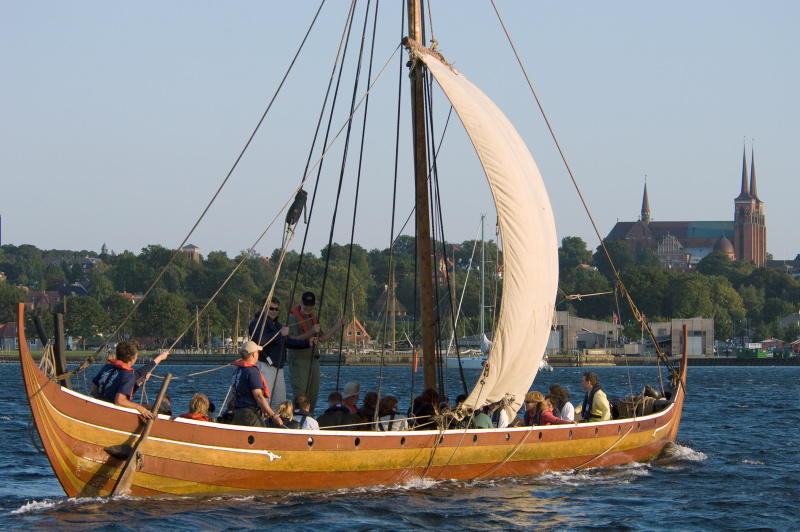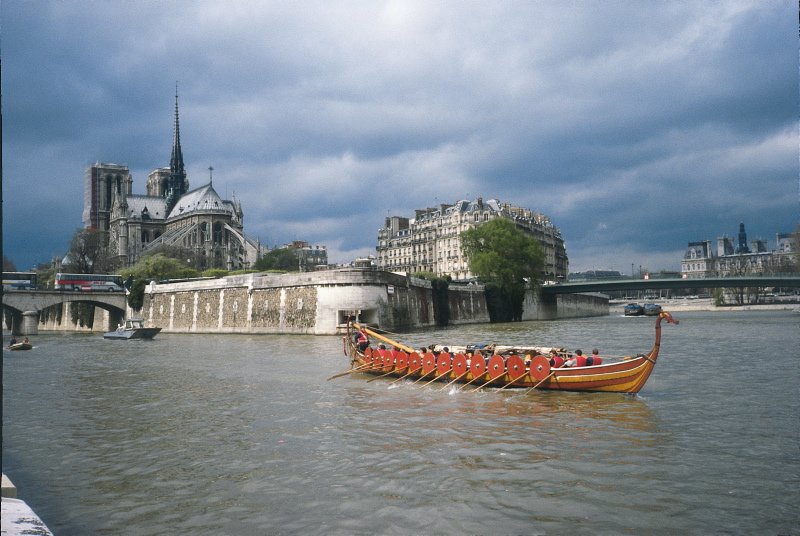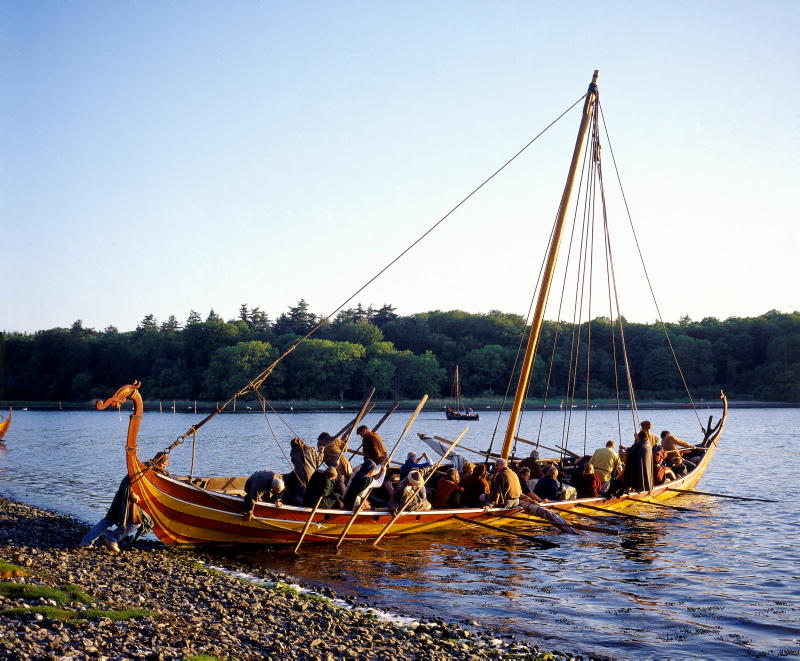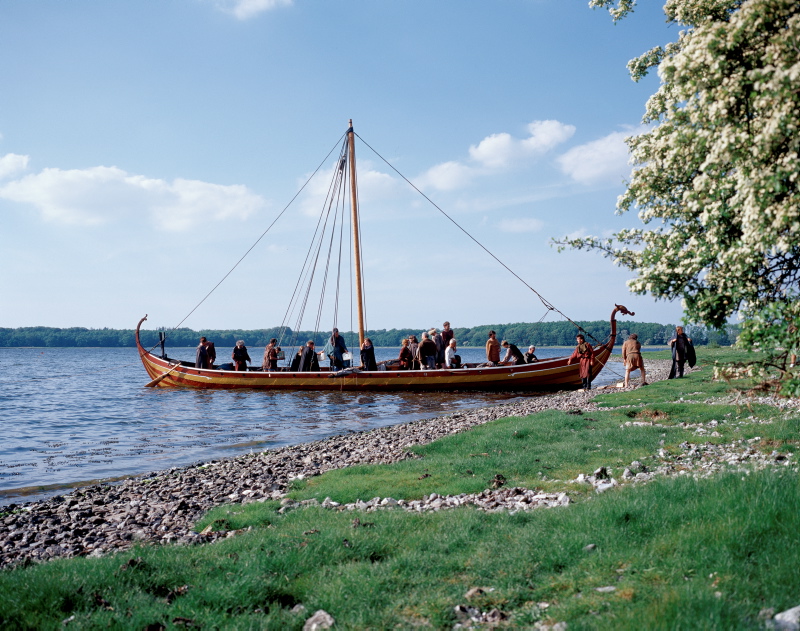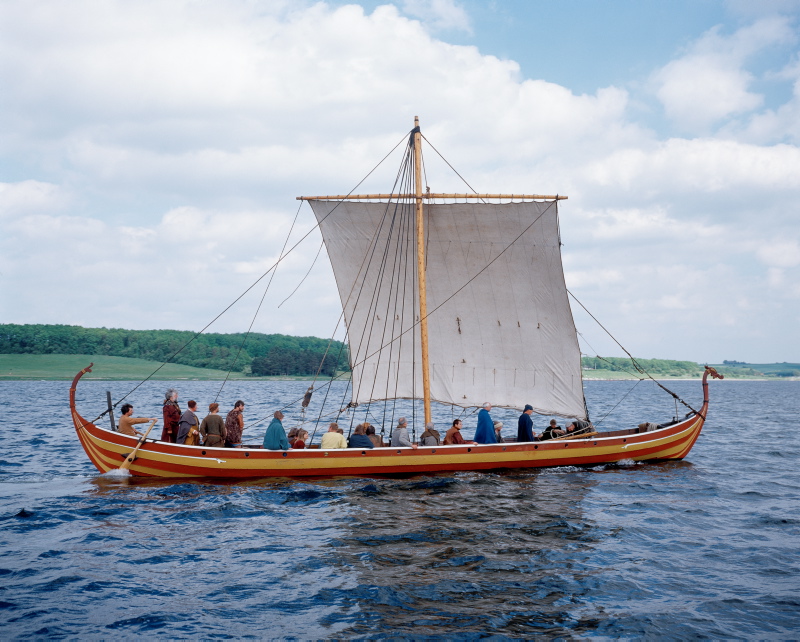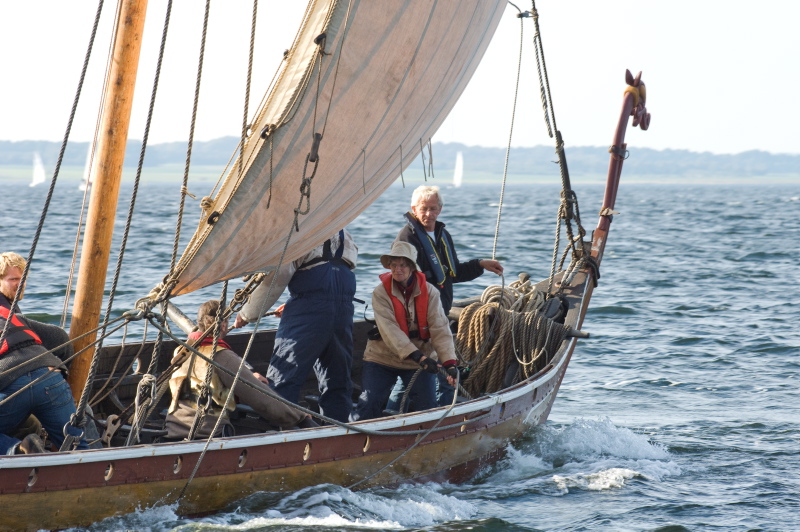Helge Ask
Reconstruction of Skuldelev 5, a smaller warship from the Viking Age, ca 1040
Helge Ask was built by the museum in 1990-91 of oak, pine and ash. It is a reconstruction of the small warship, Skuldelev 5. The ship was possibly a defensive vessel, i.e. it not only formed part of the local defense force, but was also one of the smallest units in the Danish fleet of the period. In medieval sagas and law texts the ships of this (fleet were accounted for according to the number of thwarts they had, the smallest vessel being a "13-sesser", the largest a "35-sesser". A "sesse" is a thwart, the crosspiece on which a pair of oarsmen sit, and Skuldelev 5 carried 26 oars - it was a "13-sesser".
Of the original ship, about 65% has been preserved. The bottom and almost all of the port side were intact, which made it relatively easy to reconstruct the missing starboard side. The unusual characteristic of this warship is that at-some stage in its life the top strakes were damaged and replaced with those from another ship. One of the clues that revealed this noteworthy example of re-use as early as the Viking Age was the fact that the square oarholes in the "new" top strake. did not harmonise with the oar positions of Skuldelev 5. As can be seen in the wreck preserved in the Viking Ship Museum, these were blanked off with wooden plates and new, round oarholes at the correct intervals were bored.
As the first Viking Ship Museum reconstruction, Helge Ask is decorated with colour and carving. When it is put to sea on special, festive occasions a dragon head is secured to the prow and a tail to the stern, even though a warship of this modest size would hardly have flourished such a big-ship embellishment. To complete the picture, shields similar to the ones the ship must have carried originally are placed along the sides.
It has not been possible to discover traces of paint on the Skuldelev ships, but there exist many indications - both archeological and in written records - that the ships were painted. The Bayeux Tapestry from around 1070 shows longships with stripes painted along the sides, strake by strake. Inspired by these depictions, Helge Ask has been painted with yellow and reddish-brown stripes, and a white serpent, or "worm" as the Vikings called such monsters, around the stem and stern.
The paint used by the Vikings as the basis for decoration work of this kind consisted of inorganic colour pigments with casein tempera as the binder. Casein can be obtained from, for example, buttermilk and one of its advantages is that it can be directly applied to tarred planking where it lasts for a considerable time, even in Danish weather conditions. The colour pigments are as follows: yellow (natural ochre), reddish-brown (burnt ochre), white (white lead), black (carbon black - actually soot), red - on dragon head and tail -(caput mortuum, which is very hard-burnt ochre). The clear red on the dragon head tongue is cinnabar. The Vikings were well-versed in using all these colours.
So colourfully adorned, Helge Ask can be seen almost everywhere in Danish waters during the summer when the "bådelaug" (boat guild) often sail their ship together with privately-owned Viking ship reconstructions from other parts of the country.
Information about Helge Ask
Dockyard: The Viking Ship Museum
Boatbuilders: Thomas Finderup, Morten Hesthammer, Jens Rørly, Vibeke Bischoff, Ivan C. Hansen, Søren Vadstrup, Søren Nielsen, Tom Nicolajsen
Owner: The Viking Ship Museum
Year of construction: 1991
Length: 17.30 meter (57 feet)
Width: 2.70 meter (9 feet)
Depth/draft: 0.50 meter (2 feet)
Weight: 2.00 tons
Total sail area: 46 m2
Number of oars: 26
Displacement: 5,5 tons
Crew: approx 30 men
Estimated maximum speed, sail: approx 15 knots
Estimated maximum speed, oars: 5,5 knots
